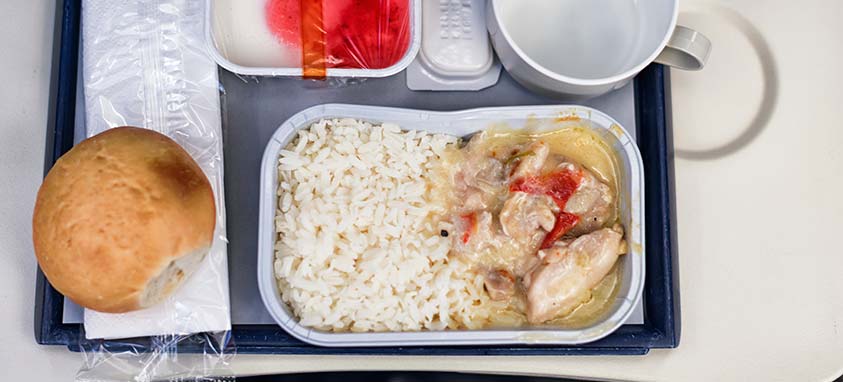Airplane food has a bad reputation. Since the beginning of in-flight service, passengers have complained of meals being dry and flavorless, among other unsavory qualities. While some speculate that less-than-satisfactory food could be due to altitude or cabin pressure, new research suggests another culprit: airplane noise. The American Psychological Association conducted a study on the interplay of audio sensory perception as it relates to eating, and found that when there’s loud noise in the background, good taste plummets.
During a simulation of airplane cabin noise, which measures at more than 85 decibels, research participants dined on foods that span salty, sour, sweet and bitter taste profiles. The control group ate in a comparatively quiet environment. While most of the meals were rated equally, two flavors stood out as being influenced by the high level of surrounding noise: sweet and umami.
In the simulated cabin din, sweet tastes were harder to detect and rated lower, while bitter umami flavors were enhanced under the same conditions. In another 2011 study on food quality and preference, similar results were found among the two taste profiles. Perception of sweetness was impaired under loud noises, and lower-pitched tones positively affected bitter and umami flavors.
Another food study conducted in 2010 by German airline Lufthansa and in-flight catering company LSG Sky Chefs found proof of the appeal in bitter-savory tastes from airline passengers. Tomato juice, which falls in the umami category, is often in high demand on aircrafts.
Food perception involves most other senses, including olfactory, visual and tactile stimulation, and the combination is from where flavor is derived. Sounds produced while consuming foods, such as noises from a crunchy bite, are also known to affect flavor perception. A 1991 study from the Journal of Food Science confirmed that when higher pitched crunching sounds linked to crispiness were muffled, food was judged as less crispy.
Other research indicates that even plate color and shape can influence taste perception. In a 2014 study by the Crossmodal Research Laboratory, deserts placed on a white plate were rated sweeter than deserts served on a black plate. Round plates were also had a similar effect on sweetness, while square plates did not appear have any effect.




